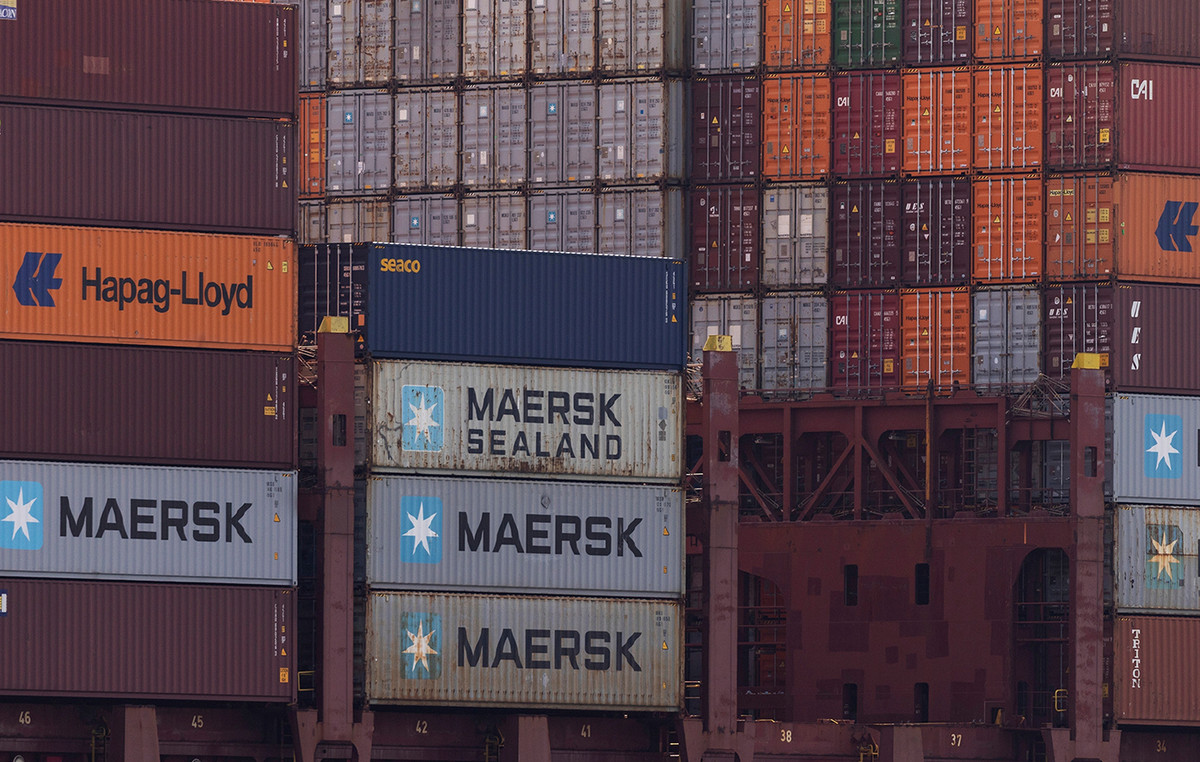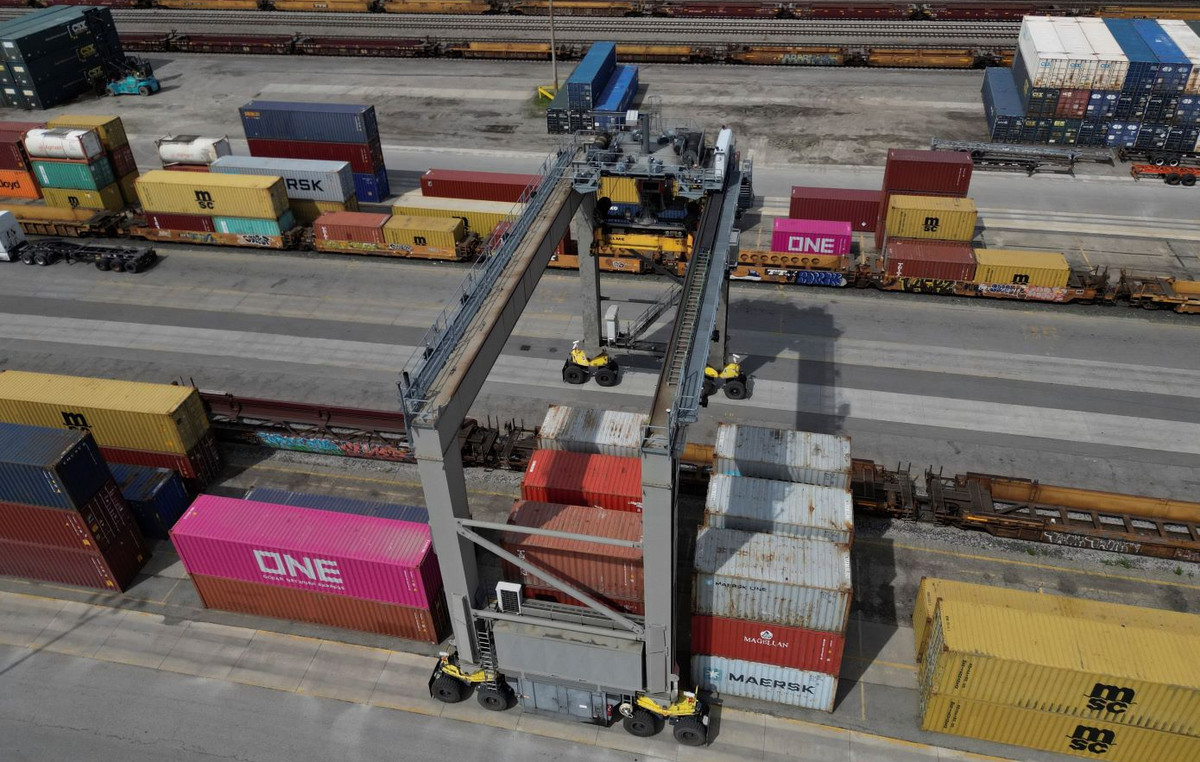This is what you need to know to operate today Monday, July 7:
The markets become aES to the risk at the beginning of the week while investors evaluate the last holders on the US tariff regime (USA). The Economic Calendar will include Mayorist sales data of the Eurozone on Monday. In the second half of the day, the Federal Reserve (FED) will publish consumer credit change data for May.
American dollar today
The lower table shows the percentage of US dollar change (USD) compared to the main coins today. The US dollar was the strongest currency against the New Zealand dollar.
| USD | EUR | GBP | JPY | CAD | Aud | NZD | CHF | |
|---|---|---|---|---|---|---|---|---|
| USD | 0.27% | 0.32% | 0.65% | 0.42% | 0.78% | 0.85% | 0.26% | |
| EUR | -0.27% | 0.08% | 0.15% | 0.13% | 0.57% | 0.58% | -0.02% | |
| GBP | -0.32% | -0.08% | 0.06% | 0.07% | 0.50% | 0.52% | -0.21% | |
| JPY | -0.65% | -0.15% | -0.06% | -0.00% | 0.34% | 0.42% | -0.33% | |
| CAD | -0.42% | -0.13% | -0.07% | 0.00% | 0.38% | 0.44% | -0.29% | |
| Aud | -0.78% | -0.57% | -0.50% | -0.34% | -0.38% | 0.11% | -0.71% | |
| NZD | -0.85% | -0.58% | -0.52% | -0.42% | -0.44% | -0.11% | -0.72% | |
| CHF | -0.26% | 0.02% | 0.21% | 0.33% | 0.29% | 0.71% | 0.72% |
The heat map shows the percentage changes of the main currencies. The base currency is selected from the left column, while the contribution currency is selected in the upper row. For example, if you choose the US dollar of the left column and move along the horizontal line to the Japanese yen, the percentage change shown in the box will represent the USD (base)/JPY (quotation).
The president of the USA, Donald Trump, said during the weekend that they are close to ending several commercial agreements in the next few days and added that they will notify the countries with which they have not yet reached an agreement on tariff rates before July 9. The Secretary of Commerce, Howard Lutnick, explained that tariff rates will be established on July 9, but will take effect on August 1. Meanwhile, Trump said the countries that align with BRICS, an intergovernmental organization that includes Brazil, Russia, India, China, South Africa (founding members), Iran, Egypt, Ethiopia and the United Arab Emirates, will be subject to additional tariffs of 10%, without exceptions. It is important to note that the 17th BRICS summit is currently being carried out in Rio de Janeiro, Brazil.
Reflecting the cautious mood of the market, the futures of the US stock indexes were losing between 0.35% and 0.6%. Meanwhile, the Dollar index (USD) It remains in positive territory above 97.00 after closing the previous week slightly down.
He EUR/USD It remains defensive and quotes in negative territory around 1,1750 on Monday. Germany’s data showed earlier on the day that industrial production expanded 1.2% in monthly terms in May, after the 1.6% contraction registered in April.
He AUD/USD It falls sharply and quotes at its lowest level in almost two weeks about 0.6500 on Monday. The Bank of the Australian Reserve (RBA) will announce monetary policy decisions in the Asian session on Tuesday. Markets expect RBA to reduce its policy rate at 25 basic points to 3.6%.
After winning almost 2% in the previous week, he Gold Tour early on Monday and descend towards $ 3,300.
He GBP/USD The week begins under a modest bearish pressure and goes back to the 1,3600 area.
He USD/JPY Win traction for the renewed strength of the USD and quotes above 145.00 in the European morning on Monday.
Tariffs – Frequently Questions
Although tariffs and taxes generate government income to finance public goods and services, they have several distinctions. Tariffs are paid in advance in the entrance port, while taxes are paid at the time of purchase. Taxes are imposed on individual taxpayers and companies, while tariffs are paid by importers.
There are two schools of thought among economists regarding the use of tariffs. While some argue that tariffs are necessary to protect national industries and address commercial imbalances, others see them as a harmful tool that could potentially increase long -term prices and bring to a harmful commercial war by promoting reciprocal tariffs.
During the election campaign for the presidential elections of November 2024, Donald Trump made it clear that he intends to use tariffs to support the US economy. In 2024, Mexico, China and Canada represented 42% of the total US imports in this period, Mexico stood out as the main exporter with 466.6 billion dollars, according to the US Census Office, therefore, Trump wants to focus on these three nations by imposing tariffs. It also plans to use the income generated through tariffs to reduce personal income taxes.
Source: Fx Street
I am Joshua Winder, a senior-level journalist and editor at World Stock Market. I specialize in covering news related to the stock market and economic trends. With more than 8 years of experience in this field, I have become an expert in financial reporting.







